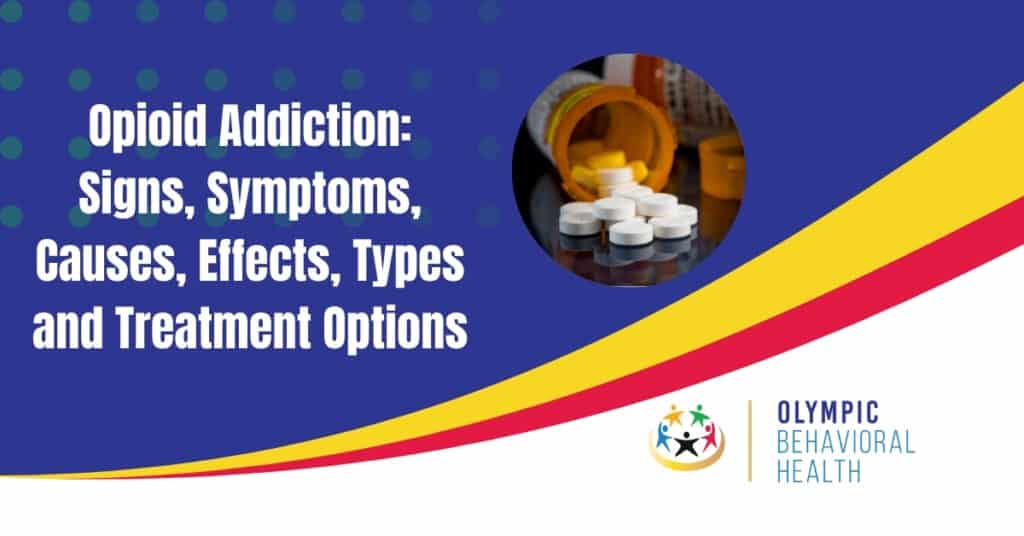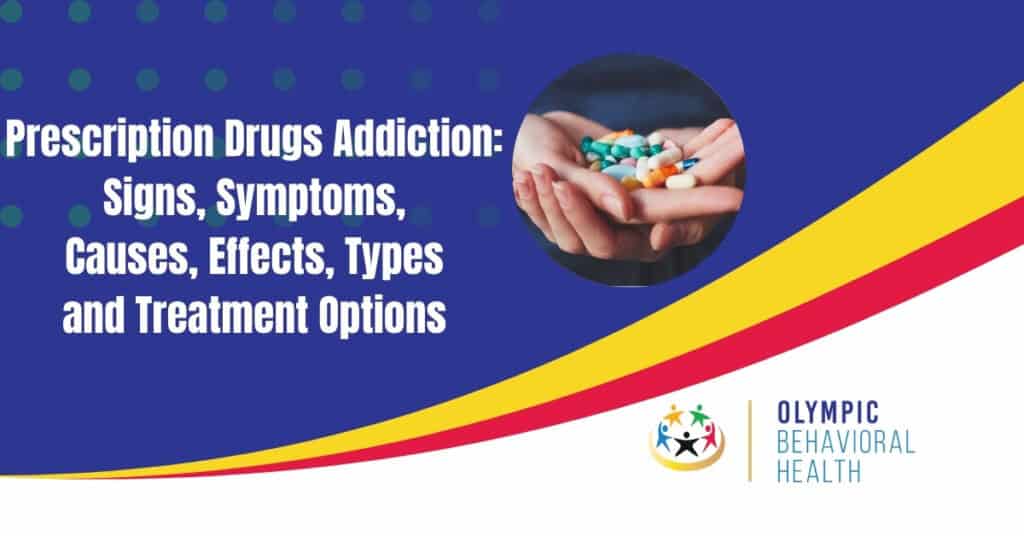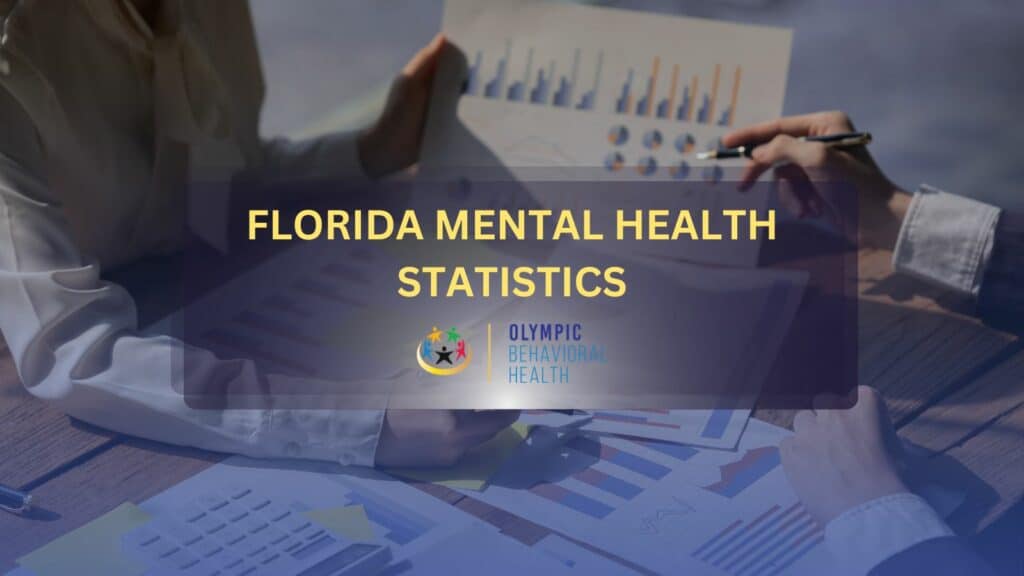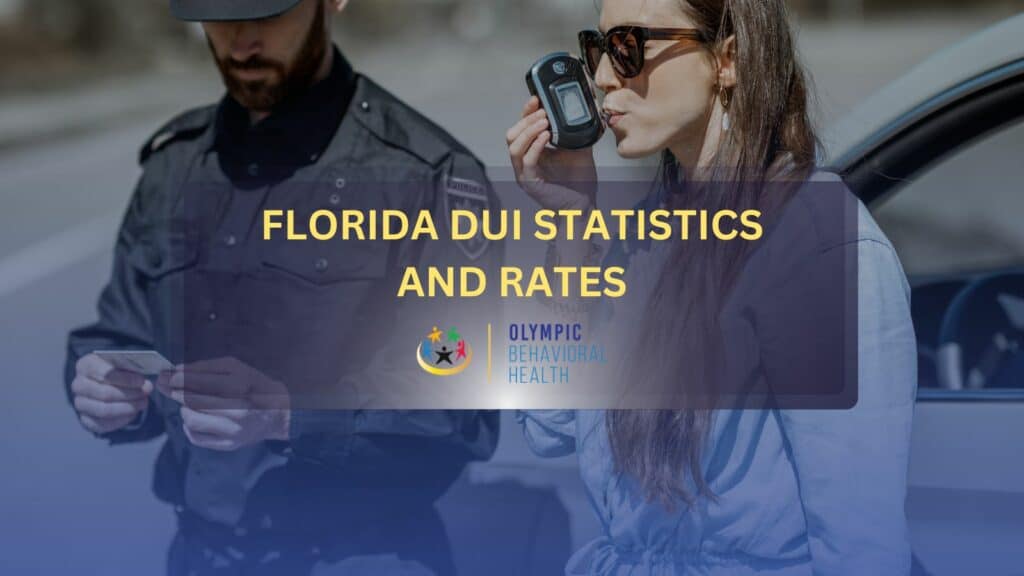Opioid addiction is a serious health issue characterized by dependency on opioids, potent pain relievers derived from the poppy plant or manufactured in laboratories. This category includes prescription medications such as morphine and oxycodone, as well as illegal drugs like heroin, all of which are highly addictive because of their powerful effects on the brain’s pleasure center.
Symptoms of opioid addiction include strong urges to use the drug, distressing withdrawal symptoms like nausea and shaking when not in use, and a lack of control over consumption. This often leads to repeated use despite awareness of the harmful consequences.
The causes of opioid addiction include genetic factors, stressful environments, and initial opioid use for pain relief or recreation. These factors quickly lead to dependence on substances like prescription painkillers or illegal drugs such as heroin, which heavily influence the brain’s pleasure responses.
What Is An Opioid Addiction?
Opioid addiction is a major health challenge, characterized by an uncontrollable desire to use opioids—strong pain-relieving drugs derived from the poppy plant or synthesized in labs. Addiction goes beyond physical dependence; it involves significant changes in the brain that lead to a compelling psychological need and intense physical cravings, making it extremely difficult for affected individuals to stop using.
Those struggling with this condition often find themselves in a relentless cycle of use and unsuccessful attempts to quit, driven by a persistent urge to consume substances like prescription painkillers, powerful synthetics such as fentanyl, and illegal drugs like heroin, despite the known dangers. This ongoing struggle significantly impacts their health and social stability.
What Is The Opioid Epidemic?
The opioid epidemic is a major health crisis in the United States, marked by the increasing use of opioids and about 50,000 overdose deaths each year. This growing problem has developed in three main stages:
- The First Wave: Started in the 1990s due to too many opioids being prescribed for pain relief, which led many people to misuse them.
- The Second Wave: Began in 2010, with more people dying from heroin overdoses as individuals switched from prescription opioids to heroin.
- The Third Wave: Starting in 2013, deaths from synthetic opioids like fentanyl, often mixed with heroin, fake pills, and cocaine, sharply increased.
In response to the opioid crisis, the U.S. Department of Health and Human Services declared a public health emergency in 2017, with the CDC launching initiatives like the Overdose Data to Action (OD2A) program to enhance overdose tracking, link at-risk individuals to resources, and fortify community responses.
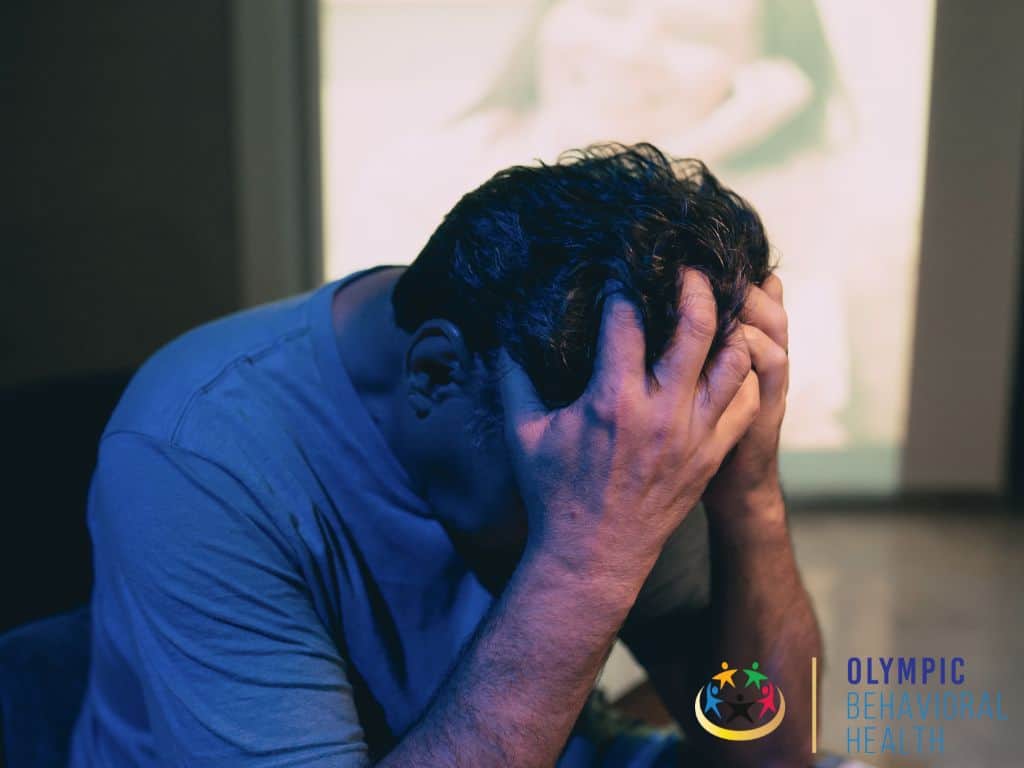
What Are Symptoms Of An Opioid Addiction?
Symptoms of opioid addiction include intense cravings for drugs, withdrawal symptoms such as nausea, shakiness, and sweating, and a lack of control over drug use. Early detection of these signs is essential for providing timely help and securing appropriate treatment for individuals struggling with addiction. This early intervention is pivotal in preventing the long-term consequences associated with opioid misuse. Here’s what to watch for:
Physical Symptoms:
- Changes in sleep patterns: Unusual sleep patterns, insomnia, or excessive sleep
- Weight fluctuations: Unexplained weight loss or gain.
- Flu-like symptoms: Frequent nausea, sweating, and shaking, reminiscent of flu.
- Marks on the body: Visible from injecting drugs.
Psychological Symptoms:
- Loss of interest: Losing interest in hobbies or activities once enjoyed.
- Social withdrawal: Isolating from friends and family, avoiding social interactions.
- Financial difficulties: Struggling with money, possibly due to spending on drugs.
- Secretive behavior: Lying or being elusive about drug use or whereabouts.
- Mood swings: Showing sudden and severe changes in mood.
- Anxiety or depression: Signs of anxiety or depression without clear triggers.
- Irritability: Reacting with increased irritability or agitation.
- Feelings of hopelessness: Expressing a lack of hope or overwhelming despair.
Recognizing these symptoms is vital for identifying opioid addiction. Each person’s experience with addiction is unique, making some symptoms more prominent than others.
What Are Warning Signs That A Loved One Has An Opioid Addiction?
The key warning signs of opioid addiction include erratic behavior, noticeable physical changes, and emotional shifts. Recognizing these signs early helps in identifying a potential problem before it worsens.
- Erratic behavior includes sudden cancellations, chronic lateness, neglected responsibilities, or withdrawal from social activities, often accompanied by secretive actions to conceal drug use.
- Physical changes manifest as drastic weight fluctuations, consistent fatigue, or unusual sleep patterns, along with visible marks from drug injections.
- Emotional shifts appear as severe mood swings, unexplained irritability, sudden sadness, or increased anxiety, signaling withdrawal from enjoyable activities.
Being alert to these behaviors and changes enables earlier detection and intervention of opioid addiction. This proactive approach can make a significant difference in managing the addiction and supporting recovery.
What Causes Opioid Addiction?
Opioid addiction is caused by using substances like painkillers or heroin, which can rapidly shift from voluntary use to a compulsive necessity despite harmful outcomes. This addiction is influenced by how the drugs are used, genetics, and lifestyle choices.
- Method of Use: Opioids are particularly addictive when used in ways other than prescribed. Misusing opioids by crushing pills to snort or inject accelerates addiction and greatly raises overdose risks.
- Duration of Use: The length of time opioids are used plays a critical role in addiction. Research shows that using opioid medications for more than a few days increases the risk of long-term use and addiction. The likelihood of continuing opioid use escalates significantly after just five days of medication.
- Genetic and Biological Factors: Genetic factors and opioids’ impact on brain chemistry drive addiction. These drugs alter the brain’s pleasure system, increasing dependency and the need for more to feel good.
- Psychological and Environmental Influences: Stress, lack of employment, and living in high drug-use areas increase the likelihood of developing opioid addiction, as do mental health issues like depression or anxiety.
- Demographic and Social Risk Factors: Young people, especially in their teens and early 20s, face a higher risk of addiction. Other risks include a family history of addiction, stressful environments, and prior legal or behavioral issues.
- Specific Risks for Women: Women face unique risk factors, including a higher likelihood of being prescribed opioids and receiving higher doses for longer periods. This leads to a greater risk of becoming dependent on prescription pain relievers.
Understanding the different causes of opioid addiction helps shape effective prevention and treatment strategies. Recognizing how drug use methods, genetics, and environmental factors contribute allows for targeted interventions. These efforts improve treatment outcomes and enhance educational programs to reduce the overall impact of addiction.
What Are The Effects Of Opioids?
Opioids relieve pain, induce relaxation, and often cause a feeling of euphoria, but they can also lead to serious health risks and side effects. Here’s how opioids impact individuals:
Immediate Physical Effects:
- Pain Relief: Opioids effectively reduce severe pain, useful in medicine.
- Relaxation and Sedation: These drugs make a person feel very relaxed or drowsy, which is helpful in medical settings but risky otherwise.
- Euphoria: The ‘high’ that opioids produce is a major reason they are addictive.
Common Side Effects:
- Gastrointestinal Problems: Nausea and severe constipation are common.
- Respiratory Depression: Opioids can dangerously slow breathing, especially in high doses.
Long-term Health Risks:
- Addiction and Dependence: Regular use leads to addiction, where a person is unable to stop using opioids even if they want to because their body depends on it.
- Social and Economic Impact: Addiction disrupts someone’s life, affecting jobs, relationships, and financial stability.
Overdose Risk:
- Opioids, especially stronger types like fentanyl, lead to overdose if too much is taken or if they are mixed with other drugs, sometimes accidentally. This can be fatal.
According to Thomas R. Kosten, M.D., and Tony P. George, M.D., in “The Neurobiology of Opioid Dependence: Implications for Treatment,” opioids alter the brain’s reward system, increasing the need for the drug to maintain pleasure, which fuels cravings. Families need to be aware of these effects, especially if a loved one is prescribed these medications. Knowing what to watch for can help prevent misuse and address problems early.
How Does An Opioid Addiction Develop?
Opioid addiction often starts from legitimate medical use—for pain relief following surgery or an injury, for example—but can quickly evolve into dependence and addiction. Here’s how the process typically unfolds:
1. Initial Use and Response
When someone takes opioids, they activate brain receptors that block pain and release endorphins, leading to euphoria. This pleasurable effect contributes to their addictive potential.
2. Development of Tolerance
Regular use of opioids leads the body to develop tolerance, necessitating higher doses to achieve the same pain relief and euphoria.
3. Physical Dependence and Withdrawal
Continuous use causes physical dependence, and sudden cessation triggers withdrawal symptoms like pain, body aches, and nausea, which compel further drug use to alleviate discomfort.
4. Progression to Addiction
Addiction develops when opioid use shifts from pain relief to compulsive use, driven by a desire for euphoria and avoidance of withdrawal. Users may increase doses, use more often, or misuse opioids by altering the method of intake to enhance effects.
5. Cycle of Misuse and Escalation
The addiction cycle deepens as individuals turn to stronger opioids like heroin or fentanyl, often due to challenges in obtaining prescriptions or seeking a stronger high. This increases overdose risks due to the uncertain potency of these substances.
6. Social and Behavioral Changes
As addiction progresses, it significantly alters social behaviors and responsibilities. Affected individuals often withdraw from relationships, face financial troubles, and neglect their duties, reinforcing the addiction cycle.
Understanding the development of opioid addiction aids in effective intervention and prevention. Identifying the stages from initial use to dependency helps manage and treat this serious issue.
What Are The Different Elements Of An Opioid Addiction?
Opioid addiction involves both physical and psychological components from chronic use. Understanding these elements is essential for effective recognition and treatment.
Physical Elements:
- Tolerance: Individuals need increasingly higher doses of opioids to achieve the same effects because their brain cells with opioid receptors become less responsive.
- Dependence and Withdrawal: Regular use conditions the brain to expect opioids, causing withdrawal symptoms like pain, anxiety, and flu-like conditions when absent.
- Compulsive Drug Use: The overwhelming need to use opioids to avoid withdrawal symptoms and to seek diminishing pleasure drives continuous use.
Physiological Elements:
- Brain Reward Systems: Initially, opioids release dopamine in the brain’s reward pathways, creating intense pleasure and encouraging repeated use.
- Neurobiological Changes: Long-term opioid use alters brain systems that control stress responses, decision-making, and behavioral control, complicating efforts to quit.
- Environmental and Genetic Factors: The likelihood of developing addiction is also influenced by social environment, stress, and genetic predispositions.
- Conditioned Responses: The brain links drug effects with environmental cues, triggering cravings and potential relapse long after use stops.
Addressing both the physical symptoms and the deeper physiological changes through medications and therapy is vital for the effective treatment of opioid addiction.

What Are The Risks Of Opioid Addiction?
Opioid addiction carries significant risks for both individuals and society, including misuse, abuse, diversion, addiction, and overdose, often resulting in death. Here’s a detailed look at these risks:
1. Misuse and Abuse
Opioids are often taken in ways not intended by the prescription, or by individuals for whom they were not prescribed, leading to harmful outcomes.
2. Illegal Distribution
Legally prescribed opioids can be sold or given away, contributing to illegal use and community-wide drug problems.
3. Addiction
Regular opioid use can lead to physical dependence and addiction, characterized by compulsive drug seeking and use despite harmful consequences.
4. Overdose
Opioids can suppress breathing, and high doses can lead to overdose and death, particularly when combined with other substances like alcohol or benzodiazepines.
5. Mental Health Risks
Individuals with psychiatric disorders such as depression or anxiety are at higher risk for misuse and addiction.
6. Suicide Risk
The connection between opioid use, chronic pain, and suicide is complex. Often, the potential for suicide is overlooked, leading to underreported statistics on opioid-related deaths.
Who Is At Risk Of Developing An Opioid Addiction?
People with certain health conditions, personal histories, and medication use are more likely to develop opioid addiction. Those at risk include individuals with:
Dosage and Usage Patterns:
- High Dosage: Higher doses of opioids greatly increase the risk of misuse and overdose.
- Long-Term Use: Using opioids for extended periods makes addiction more likely, sometimes developing in just a few days.
- Type of Opioid: Long-acting or extended-release opioids have a higher risk of overdose than short-acting forms.
Health and Age Factors:
- Older and Younger Adults: Older adults (65+) may be more sensitive to opioids, while younger adults (18-25) may be more likely to misuse them.
- Respiratory Conditions: People with breathing problems such as sleep apnea or COPD are at greater risk from opioids’ effects.
- Mental Health Conditions: Conditions like depression or anxiety increase the likelihood of opioid misuse.
History of Substance Abuse:
- Individuals with a history of alcohol or drug abuse are particularly at risk for opioid addiction.
Mixing Medications:
- Taking opioids with other medications like benzodiazepines (e.g., Xanax, Valium), muscle relaxants, or alcohol increases the risk of severe side effects, including fatal overdoses.
For those at higher risk, it’s important to discuss opioid use and safety with healthcare providers to manage and reduce potential dangers effectively.
How Can You Prevent An Opioid Addiction?
Preventing opioid addiction starts with understanding and implementing effective strategies that address the various aspects of health and well-being. Here are some key approaches:
- Education and Awareness: Educate yourself and others about the risks of opioid misuse. Understanding the potential for addiction and the consequences of opioid use is critical.
- Proper Use of Prescriptions: Only use opioids as prescribed by a healthcare provider. This includes taking the prescribed dose at the correct times and never sharing medications with others.
- Regular Monitoring: If you are prescribed opioids, regular follow-ups with your healthcare provider are essential. This allows for adjustments to the prescription before problems escalate.
- Alternative Pain Management Strategies: Explore non-opioid treatments for pain management such as physical therapy, acupuncture, and over-the-counter pain relievers. Discuss these options with your healthcare provider.
- Early Intervention: If you or someone you know begins to show signs of opioid misuse, seek professional help immediately. Early intervention can prevent the progression to full-blown addiction.
- Support Systems: Having a strong support system can help individuals resist the pressures and temptations that can lead to opioid misuse. This includes family, friends, healthcare providers, or support groups.
By implementing these strategies, individuals and communities actively engage in preventing opioid addiction and its devastating impacts. This proactive approach not only curtails the spread of addiction but also significantly mitigates its harmful effects on society, ensuring a healthier future for all involved.
What Substances Can Cause An Opioid Addiction?
Opioid addiction arises from both prescribed medications and illicit drugs. Here’s a list of commonly abused opioids:
- Heroin: An illegal opioid that is often used when prescription drugs become too costly or inaccessible.
- Fentanyl: A powerful synthetic opioid that is illegally made and mixed with other substances to increase its strength and addictive potential.
- Oxycodone (OxyContin): A prescription opioid widely used for pain relief but known for its potential for addiction.
- Morphine: Commonly used in medical settings for severe pain management, it has a high potential for abuse.
- Hydrocodone: Frequently prescribed for pain relief and has a significant risk for dependency and addiction.
- Codeine: Often prescribed for mild pain or cough suppression, it can lead to addiction if used improperly.
- Tramadol: A less potent prescription pain reliever but still poses a risk for addiction when misused.
What Are The Withdrawal Effects Of An Opioid Addiction?
Opioid withdrawal symptoms arise as the body readjusts to functioning without opioids. Medical intervention is often required to manage these effects safely. These symptoms include:
- Anxiety and cravings
- Muscle aches
- Sweating
- Rapid heartbeat
- Abdominal cramping
- Diarrhea
- Nausea and vomiting
- Dilated pupils
- Goosebumps
- Involuntary leg movements
- Increased blood pressure and body temperature
- Insomnia and agitation
Can You Treat An Opioid Addiction?
Yes, opioid addiction can be treated effectively through a combination of lifestyle changes, continuous care, and robust support networks. Key components include:
1. Lifestyle Changes
Adopting healthy habits such as regular exercise, balanced nutrition, sufficient rest, and engaging in fulfilling activities to enhance overall well-being.
2. Continuous Care
Recovery is a continuous journey, necessitating ongoing therapy, consistent participation in support groups, and the continuation of medication-assisted treatment (MAT) to manage cravings and minimize relapse risk.
3. Support Networks
Establishing a strong support system through connections with family, friends, and peers in recovery provides essential encouragement and accountability needed to navigate recovery successfully.
What Treatment Options Are There For An Opioid Addiction?
Opioid addiction is effectively managed with tailored treatments that address both physical dependence and psychological aspects, ensuring a comprehensive recovery approach.
- Medication-Assisted Treatment (MAT): FDA-approved medications such as methadone, buprenorphine, and naltrexone to reduce cravings and withdrawal.
- Counseling and Behavioral Therapies: These therapies help modify behavior, enhance life skills, and support adherence to a long-term treatment plan.
- Support Groups: Groups like Narcotics Anonymous provide community support and encourage sharing experiences and recovery challenges.
- Comprehensive Care: Recovery often requires ongoing monitoring and adjustments to the treatment plan to prevent relapse.
- Holistic Approaches: Making changes like exercising, eating well, and practicing mindfulness can help improve overall health and support recovery.
Treatment Settings:
- Outpatient: Patients live at home and maintain regular activities while attending scheduled treatment sessions.
- Intensive Outpatient: Offers more comprehensive services without the need for hospitalization.
- Residential: Patients reside in a treatment facility for duration-based care, especially beneficial for severe cases.
- Hospitalization: Used for detoxification and managing severe cases in a controlled environment.
Choosing the right treatment setting is essential and depends on individual assessments by healthcare professionals to determine the most effective approach for recovery.
How Do You Prevent An Opioid Relapse?
Preventing relapse is an essential part of recovery, focusing on recognizing triggers, engaging in continuous therapy, and managing medications effectively.
- Technology’s Role: Digital tools and applications monitor progress, remind individuals about medication, and provide immediate access to support and resources.
- Pharmacological Advances: Ongoing research into new medications and treatment approaches, including potential opioid vaccines, shows promise for more effective relapse prevention.
- Holistic Approaches: Practices such as mindfulness, meditation, and yoga can improve mental health, reduce stress levels, and enhance overall well-being, significantly contributing to recovery.
Can opioid addiction be cured, or is it a lifelong condition?
Opioid addiction is a chronic condition that, like diabetes or hypertension, can be managed effectively with ongoing treatment to allow for a healthy life.
How can families help with opioid addiction support?
Family members can support by encouraging treatment, learning about addiction, offering empathy, participating in therapy, and joining support groups.
What are common misconceptions about opioid addiction?
Misconceptions include beliefs that addiction affects only certain groups, is a moral failing, or that stopping is simply about willpower. Addiction is a complex brain disorder.
What pain management alternatives exist to avoid opioid use?
Options include non-opioid medications, physical therapy, acupuncture, cognitive-behavioral therapy, and mindfulness practices.
What are the success rates for the treatment of opioid addiction?
Success rates vary by treatment type and individual circumstances, but combining Medication-Assisted Treatment with behavioral therapy generally improves outcomes.
Find Help For Yourself Or A Loved One At Olympic Behavioral Health
If you or a loved one needs help with opioid addiction, consider reaching out to Olympic Behavioral Health in West Palm Beach, FL. They provide a supportive environment with treatments tailored to individual needs, designed to fit seamlessly into daily life. This step toward recovery offers access to dedicated care for overcoming addiction and reclaiming a healthier life.

Share This Post
